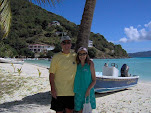Leaving Kingston, NY, we passed its attractive lighthouse as well as other neat lighthouses on our 60 mile trip up the Hudson to Troy, NY.
Troy is the gateway to the New York canal system where, after you enter your first lock, you must decide whether to turn left on to the Erie Canal or go straight up river to the Champlain Canal and Lake Champlain. We took the left turn. The Erie canal is not the same canal as the original finished in 1825. The original was only four feet deep and forty feet wide, and was designed to carry small barges. Built before the time of self-propelled boats, the barges were pulled along by mules which walked on paths along what were essentially ditches filled with water. While the old canal was enlarged and deepened several times over the years to allow larger craft to transit, the system was changed dramatically at the turn of the century once craft were self-propelled. The canal could now follow natural rivers and waterways. Much of our trip on the Erie was on the Mohawk River, which is fairly wide and easily navigated between the red and green buoys. At times, we saw remains of the old canal. While at Schenectady, we docked next to ruins of an old aquaduct where the canal actually crossed the Mohawk. The flat part on top of the arch in the accompanying photos is where mules walked, pulling barges which floated in water contained in the man-made aquaduct next to the path.
The Mohawk is a beautiful river, following a course through mountain valleys. You can sometimes see highways and often see trains which follow the same natural waterway.
After a hundred miles or so the canal leaves the Mohawk and becomes a relatively narrow canal which tracks alongside the river. This we followed until we entered the twenty mile long Lake Oneida and then, after another seven miles, we turned right onto the Oswego Canal to Oswego, NY.
While on the canal, we stayed at several small marinas at places including Schenectady, St. Johnsville, Brewerton (at the end of Lake Oneida), and Oswego. One night we also tied up to a lock wall. There, Linda, Schatze, and I enjoyed a peaceful night alone on the river.
 The locks we traversed ranged in rise or drop from eight to forty feet, most being in the twenty foot range. While a few locks had fixed rubber-coated vertical rods around which we put our bow and stern lines, most had hanging ropes, the end of which we looped under a horn of our bow and stern cleats. All-in-all, we transited twenty eight locks on this part of our trip, and we slipped under innumerable low bridges and flood gates.
The locks we traversed ranged in rise or drop from eight to forty feet, most being in the twenty foot range. While a few locks had fixed rubber-coated vertical rods around which we put our bow and stern lines, most had hanging ropes, the end of which we looped under a horn of our bow and stern cleats. All-in-all, we transited twenty eight locks on this part of our trip, and we slipped under innumerable low bridges and flood gates. From Oswego, we headed north across Lake Ontario to Kingston, Ontario. Kingston is a great little city, with lots of interesting restaurants, outdoor cafes, and shops. It's a lively place, home to Canada's version of West Point, and with its beautiful parks and active beautification projects, exudes community pride. Next, we traveled through the inland waterways of the Bay of Quinte to Trenton, the gateway to the Trent-Severn Waterway. The next day, we entered the first of forty four locks on this two hundred eighty mile route to Georgian Bay. The locks here are narrow and short, and are manually operated by the lockmaster and assistant who open and close the gates using man power alone.
Unfortunately, our starboard engine overheated as we approached lock five, and after staying overnight on the lock wall adjacent to the lock, and after working with a mechanic, we limped the seven miles back to Trenton.
During a sea trial there, the over heating issue corrected itself (either weeds or a stuck thermostat, we think), but we decided to forgo the Trent-Severn and head south for the Welland Canal and the Great Lakes, where we wouldn't have to worry so much about narrow, shallow channels, rocks, weeds in our intakes, and where we had a better chance to find facilities to haul us out, if needed.
Waiting out mechanics and weather, we ended up staying four additional days in Trenton at Fraser Park Marina. It was a great place to be during a stressful situation. The hosts were extremely helpful, finding a way to accommodate us during their busiest weekend of the year. On July 1, Canada Day, we enjoyed the company of nine additional looper couples, and shared holiday festivities, a marina potluck, fireworks, and the inaugural lighting of the city's new welcome sign.
On July 2, we crossed the big lake and stayed at Port Dahlousie, next to the Welland entrance. The next day we picked up a required third crew to help us through the canal. After eight and a half hours on this intimidating system, we exited and stayed overnight at a nearby marina.
From there we went south across Lake Erie to Erie, PA, where we checked into immigration/customs, fueled up, and took a ferry across the bay to Presque Isle State Park, where we had arguably the best bike ride of our trip.
Next, a one hundred ten mile trip to Cleveland, then a similar length run to Detroit and to the southern tip of Lake St. Clair. Perfect Timing will be docked here for five or six days while we catch up at home.



















